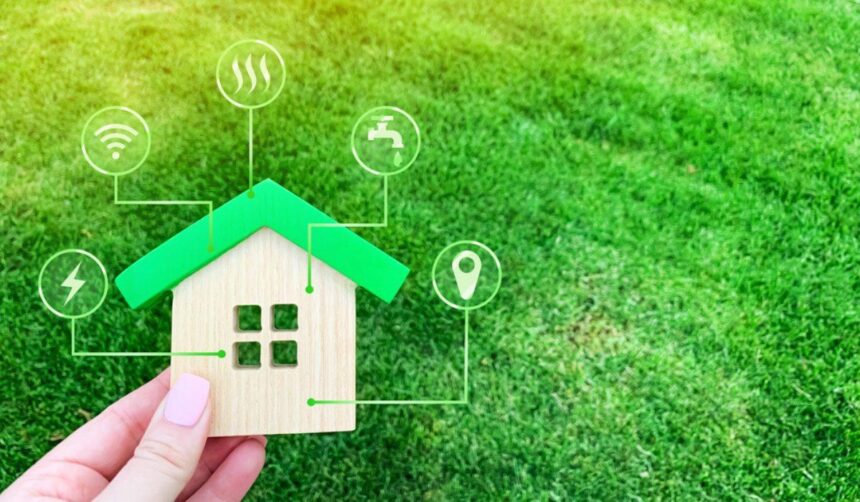Are you a homeowner planning an eco-friendly home renovation but struggling with the budget? You are at the right place. At present, environmental awareness and eco-friendly approaches are becoming essential, and the government is helping people who are adopting green practices in their homes. The financial support from the government comes in the form of home renovation grants for solar installations, insulation upgrades, old heating system replacement, etc.
By offering financial assistance, the government aims to reduce carbon footprints, promote energy efficiency, conserve natural resources and create a greener environment. As a homeowner, choosing eco-friendly home renovation helps you cut down on utility bills and save money in the long term. In this blog, we are going to share everything about eco-friendly home renovations to help you secure the right home renovation grant and create a greener and eco-friendly home.
What are Home Renovation Grants?
Before delving into eco-friendly home renovation grants, it’s crucial to understand what general home renovation grants are. Home renovation grants are non-repayable funding for low-income families to renovate their homes and make them suitable for living. They are provided by federal, state and local governments or NGOs. Grant funds can be used to repair homes, install ramps, widen doorways, make upgrades, update outdated plumbing and electrical systems, and eliminate health and safety issues. They are provided to low-income families to raise their standard of living and ensure their comfort and safety. Most people consider homerenovationgrants.org for a complete list of home renovation grants available.
Now, when we talk about eco-friendly home renovation grants, they are provided to make repairs and upgrades that incorporate sustainable resources, practices, and procedures. These grants prioritize initiatives that save energy, conserve water, improve indoor air quality, reduce carbon footprints and lessen environmental impacts.
Understanding the Types of Eco-Friendly Home Renovation Grants

There are various types of eco-friendly home renovation grants available to homeowners to support green home makeovers. Here are some common types:
Government/Federal Grants:
Energy Efficiency Grants: These grants focus on improving energy efficiency in homes by covering insulation, installing energy-efficient doors and windows, sealing air leaks, replacing HVAC systems, and installing electric heat pumps, etc.
Weatherization Assistance Programs: WAP offers funding to low-income households to improve their homes’ overall energy efficiency and comfort. This includes improvements to the HVAC system, weather-stripping, insulation, caulking, air leaks, and other measures.
Low-Income Home Energy Assistance Program: LIHEAP provides funding to low-income families for energy bills, weatherization, and energy-related repairs. It reduces utility costs by sending the bill directly to the power companies.
Renewable Energy Grants: This includes a Residential Renewable Energy Tax Credit that sets off the installation of renewable energy equipment such as geothermal heat pumps, solar panels, solar water heaters, wind turbines, etc.
The Energy Efficiency and Conservation Block Grant: EECBG is a program that offers financial assistance to local governments to implement energy-efficient initiatives, such as retrofitting homes, energy efficiency and conservation projects, etc.
Private Corporation Grants:
Many companies in the US are investing in sustainability by providing grants or rebates to low-income families for sustainable home renovations. These grants are awarded based on specific eligibility criteria and focus areas, such as community-based sustainability projects.
Non-Profit Organizations:
There are many environmentally conscious non-profit organizations that offer funding and free resources for homeowners to make sustainable changes. These include energy-efficient upgrades, renewable energy installations (such as solar panels), water conservation measures, etc.
How to Apply for Eco-Friendly Home Renovation Grants

There are many eco-friendly home renovation grants for low-income families to repair their homes while contributing to environmental sustainability. Here are some important steps to follow when applying for the grants:
Identify Scope of Renovation Projects
The first and most important step is to identify the scope of your home renovation project. This will help you choose the right grant that aligns with your project’s scope and requirements.
Insulation Upgrades: Adding or improving insulation to reduce energy consumption.
Renewable Energy Installation: Installing solar panels and solar thermal systems for renewable energy generation.
Windows and Doors: Upgrading to dual pane windows and doors with low-emissivity coatings.
Lighting: Replacing traditional bulbs with energy-efficient LED or CFL bulbs
HVAC Systems: Replacing old systems with energy-efficient models, including programmable thermostats and zoning controls.
Water Conservation: Installing water-saving fixtures and systems like aerators faucets and low flow showerheads.
Do your Research
Check various federal, state, or local government programs and websites to find out if there is a home renovation grant available for eco-friendly home improvements. Add filters about your project and get customized results on their website.
Understand Eligibility Criteria

Read the terms and conditions and check the grant’s eligibility criteria. Ensure that the grant aligns with your project scope and fulfils the eligibility criteria in terms of income level, property type, the scope of the renovation, etc. It’s important to meet the criteria for applying for the home renovation grant to avoid missing out on the right one.
Gather Necessary Documents
Now that you have selected the correct grant to apply for, it’s time to gather the necessary documents. Keep the important documents like ownership proof, income details, family members’ information, improvement plans, estimates from contractors, etc., readily available. You will need to fill these details in the application form.
Write a Well-Structured Grant Proposal
Keeping in mind the word limit and format, you have to write a creative and concise grant proposal that includes a description of your project, such as changes you want to make, budget allocation, expected outcomes, completion date, etc.
Fill the Application Form
Fill out the application form while adhering to the instructions and guidelines such as format, word limit, deadline, etc. Be clear and concise and provide all required information and documents accurately. At last, double-check all the details to avoid any mistakes.
Submit and Track

After filling out the application form, send it off and stay attentive. Make sure to follow up and respond to any inquiries or further information requested. Sometimes, the funders require additional information, and you should provide that information as soon as possible to maximize your chances of securing the grant.
Conclusion
In conclusion, eco-friendly home renovation grants are a great funding source for low-income families to upgrade their homes while contributing to sustainability. Many government and federal agencies, state corporations, and non-profit organizations offer grants for such home improvements in the US. However, make sure to follow the right steps, check eligibility, and apply for grants that align with your project’s scope to maximize the chances of success.







